Battle of Chancellorsville
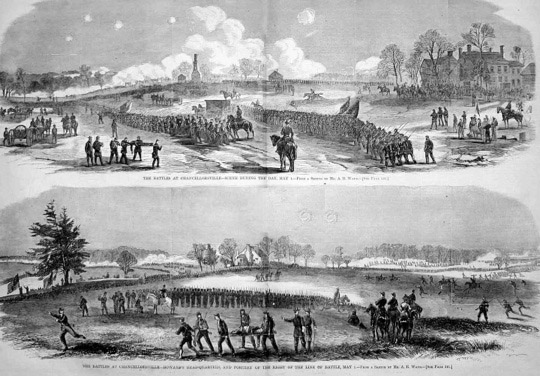
These drawings come from Harpers Weekly of May 23, 1863 and is captioned: "The Battles at Chancellorsville, Scene During the Day, May 1, From a Sketch by Mr. A. R. Waud. [See Page 331]." The lower image is captioned, "The Battles at Chancellorsville - Howard's Headquarters, and Position of the Right of the Line of Battle, May 2, From a Sketch by Mr. A. R. Waud.
In January 1863 the Union army once again tried to cross the Rappahannock and attacked the Confederate Army. Initially the attacked was met with success, but Lee's superior leadership and the unwillingness of the Union forces to sustain an encounter resutled in another Union defeat.
.
After the debacle of Fredericksburg, Burnside in January made an additional attempt to cross the Rappahannock, which was now heavily fortified. On January 19th the army of the Potomac broke camp and headed upriver. The weather turned terrible, and after two days Burnside's was forced to call off the march, which was terribly bogged in the mud. It became known as the Mud march, and marked another low for the Army of the Potomac. On January 25th Lincoln replaced Burnside as the commander of the army of the Potomac, immediately replacing him with Joseph Hooker.
Hooker immediately reorganized the army, created an independent cavalry division, and most important reorganized the army. As one veteran recalled many years later;
" From the commissary came less whiskey for the officers and better rations, including vegetable, for the men. Hospitals were renovated, new ones built, drunken surgeons discharged, sanitary supplies furnished, and the sick no longer left to suffer and die without proper care and attention. Officers and men who from incompetence or disability could be of no further use to the services were allowed to resign or were discharged, and those who were playing sick in the hospitals were sent to their regiments for duty."
Moral rebounded, but that was obviously only a start. Hooker needed to attack Lee forces. He developed a plan of attack, which he kept secret from everyone, so as not to alert Lee of his plans. His plans called for dividing his army in two. The first half would secretly move North and cross the river getting behind Lee, while the other half under Sedgwick would cross south of the city to fool Lee into thinking that this was the main attack.
The army of the Potomac broke camp on the 27th of April, and headed North. They successfully moved North without being observed by the confederates and crossed the river at Kelly's ford. At the same time Sedgwick began crossing South of the city.
The troops North quickly moved in and captured Chancellorsville, but instead of keeping moving under the orders from Hookers they then stopped to regroup before continuing. By the end of the 30th Lee had decided that Sedgwick's crossing to the South of town was merely a feint, and the main attack was coming to the North. Lee ordered his main forces North. They moved North on the morning of the first. That day, Hooker's forces- moved out as well. Slocum's forces were to advance along Plank road on the right, supported by Howard's corp., Meade was to advance on the left supported by Couch's corps. The roads led through an area that was known as the wilderness, thick forest that was almost impenetrable. The goal was to make it through the woods to the open, where the Unions numerical strength would be effective. The going was not easy and a regular army division commanded by George Sykes was forced to withdraw when it came under withering fire. The division regrouped and receive reinforcements but before it could resume its advance it received orders from Hooker to pull back. Hooker seems to have lost his nerve, and he pulled all of the army back to their starting point of the morning. Meanwhile Lee had arrived on the scene. He and Jackson, after scouting out the Union defensive lines concluded that a direct attack on them would fail, instead it was decided that Jackson commanding 25,000 men would make a large flanking move and hit the Union armies Northern flank. Jackson moved off, and although his movement was observed by Union forces, Hooker concluded that it was the beginning of a confederate withdrawal. Thus despite mounting evidence that Jackson was going to attack the North flank of the army no preparations were made, nor was Lee almost empty lines attacked. At 6 PM on May 2nd, Jackson launched his attack on the unsuspecting Union flank. It fell back in confusion. Meanwhile Jackson himself was wounded by his own men. He died a few days later.
Hooker ordered the forces of Sedgwick to attack from the south and on the morning they successfully stormed the Marye Heights, defended this time only by Early's division, which was forced back. Sedgwick was ordered to advance and attack Lee's main body from his rear. Unfortunately for Sedgwick the inactivity of Hookers forces around Chancellorsville allowed Lee to turn his army and face Sedgwick, who was fought to a standstill. Sedgwick retired back across the Rappahannock. The next day before the Confederates could renew there attack, the Union forces withdrew from there beachhead across the Rappahannock. Once again Lees superior generalship and union incompetence had bested a Union forces twice his size.
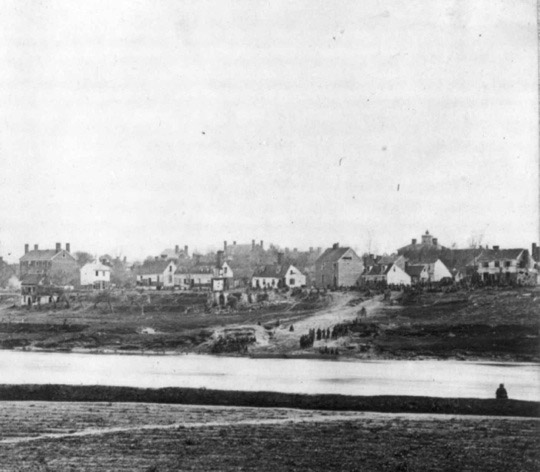
A View of the town
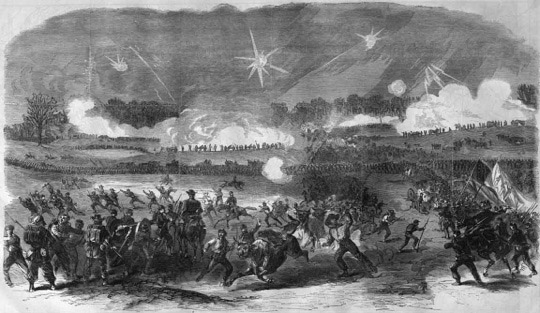
These drawings come from Harpers Weekly of May 23, 1863 and is captioned: The Battles At Chancellorsville—couch's Corps Forming Line Of Battle To Cover The Retreat Of The 11th Corps, 2d May, 1863.—from A Sketch By Mr. A. R. Waud.
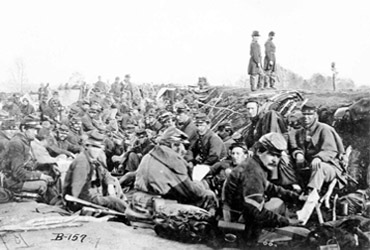
This photo shows Union Soldiers in their trenches.
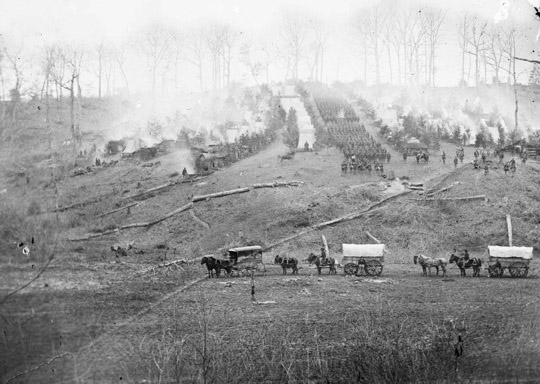
This photo shows Belle Plain, Virginia. Camp of 150th Pennsylvania Infantry
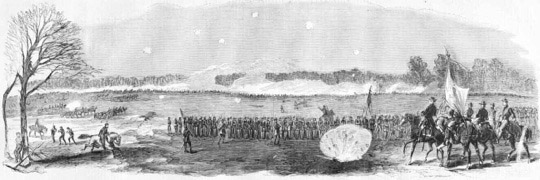
These drawings come from Harpers Weekly of May 23, 1863 and is captioned:The Battles At Chancellorsville—Second And Third Corps Repelling Jackson's Assault, May 3.—from A Sketch By Mr. A. R. Waud Of The 11th Corps, 2d May, 1863.—from A Sketch By Mr. A. R. Waud.
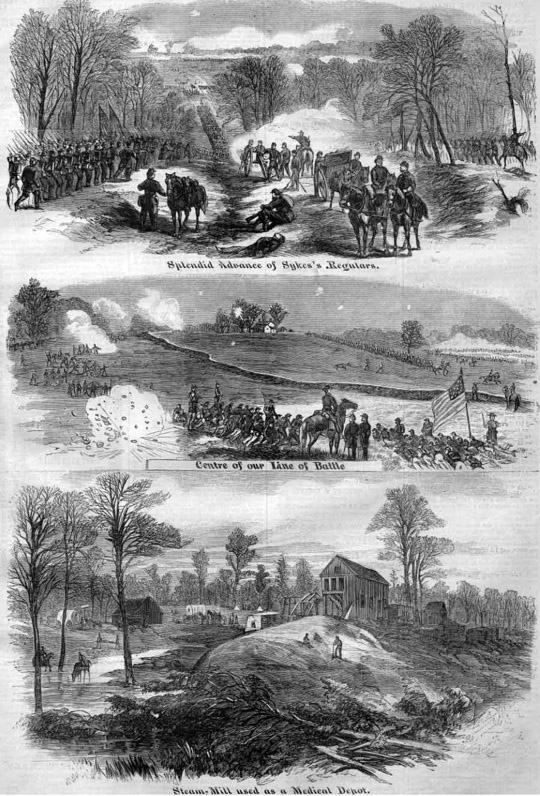
 >
>